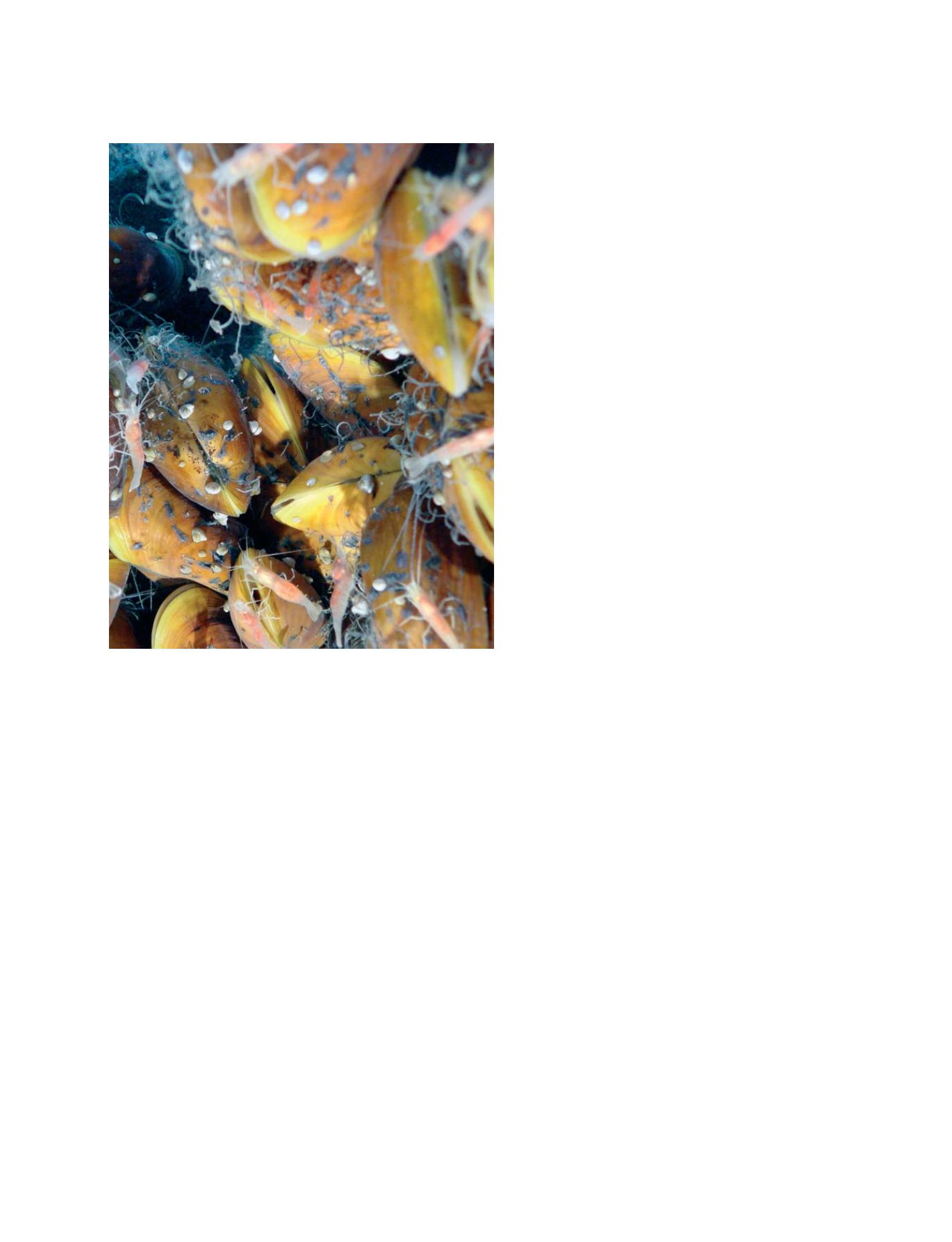

[
] 269
Comprehensive assessment of the state of estuaries and coastal ecosystems
Scientific assessments of the changing environment provide the foun-
dation for sustainable management of resources. A Census study of
human impact on ecological change traced changes from historical
times to the present in species, species invasions, habitats and water
quality in twelve estuaries and coastal seas in the US and Canada. This
assessment determined how the decline of coastal seas accelerated in
the last 150-300 years. This is the most comprehensive quantitative
assessment of the state of estuaries and coastal ecosystems to date.
Basin-wide observations of migration patterns and ocean properties
As of 2007, researchers had tagged more than 2,000 animals and
birds in the Pacific Ocean, providing unprecedented information on
their behaviour. Tags attached to the animals transmit their posi-
tions and other information, revealing migration routes and areas
where the animals gather to feed and breed. The data will help protect
endangered species and help society better manage fisheries that are
at risk of collapse.
An extraordinary and largely unexpected bonus of this programme
is the transmission of important information about water properties.
Temperature and salinity profiles, normally acquired at great cost
from ships, are acquired by these ‘animal oceanographers,’ yielding
a rich cache of data of interest to biologists as well as information
sought by the oceanographic community – and the Global Ocean
Observing System.
Establishment of the
Ocean Biogeographic Information System
The Ocean Biogeographic Information System (OBIS) is an
online, user-friendly system for absorbing, integrating, and
assessing data about life in the oceans. OBIS is aimed at
stimulating research generating new hypotheses concern-
ing evolutionary processes, species distributions, and roles
of organisms in marine ecosystems. Today, OBIS contains
more than 13.4 million records of 82,000 species of marine
life from 222 databases. All data are freely available over
the Internet and interoperable with similar databases.
Software tools are available for data exploration and analy-
sis. Any organization, consortium, project or individual
may contribute to OBIS. Given its strengths and global
role, OBIS will be a key data management contribution to
the overall framework of GEOSS.
How the Census contributes to GEOSS
The Census of Marine Life contributes to GEOSS by
laying the groundwork for global biological monitoring
in several GEO societal benefit areas.
Biodiversity
One of the goals of GEOSS is to develop a biodiversity
observation network on land and for the ocean. The
Census, through its various ocean realm projects,
provides the information that will guide the develop-
ment of such a global network. The Census work can
facilitate the establishment of monitoring systems and
help achieve consensus on data collection protocols and
interoperability.
Another goal of GEOSS is to capture historical data
on biodiversity from natural history collections in data-
bases and museums as well as from field programmes –
data that is critical to the design of observational systems
and predictive models. The Census project on the
History of Marine Animal Populations aims to improve
our understanding of ecosystem biodiversity by focus-
ing on long-term changes in stock abundance and the
ecological impact of large-scale harvesting. It helps to
answer the question ‘what lived in the oceans?’
Agriculture and fisheries
Salmon provide an important economic and protein
resource in some parts of the world, but little is known
about their migration and life history. The use of acousti-
cal tags is yielding new insights on the marine life
history of Pacific salmon as well as promoting the appli-
cation of new tagging technology. The tagging of an
increasing variety of other valuable species is contribut-
ing to our understanding of their life history. An
international exploration of the macrofauna of the
northern mid-Atlantic Ridge ecosystem is revealing
comprehensive information on the processes control-
ling their distribution and the community structures.
Ecosystems and habitat documentation
Through its work on ecosystems of coral reefs, oceanic
ridges, the open ocean and the polar regions, the Census
A dense bed of hydrothermal mussels and shrimp covering the slope of the
Northwest Eifuki volcano near the Mariana Arc in the western Pacific ocean
Photo: US National Oceanic and Atmospheric Administration (NOAA)
S
OCIETAL
B
ENEFIT
A
REAS
– B
IODIVERSITY
















